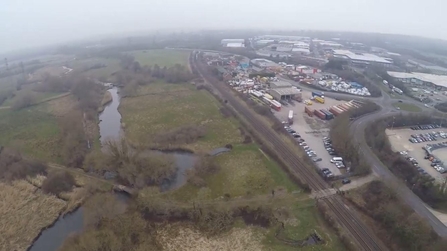Friday 2nd July 2021
I met with my team and the investigation and response team on site today.
The Southern Water team have been on site since May and have been working with the Environment Agency and Natural England to narrow down the source of the pollution, undertake monitoring, and implement efforts to clean it up. Whilst there has clearly been a major oil spill by a private company causing the bulk of this latest pollution incident, there is a long history of ongoing small scale issues of fuel leakage into the river, all linked to the adjacent industrial estate.
The lower reaches of the River Test and surrounding wetlands are some of the most important in the world, yet they are surrounded on all sides by heavy industry, roads and development.


